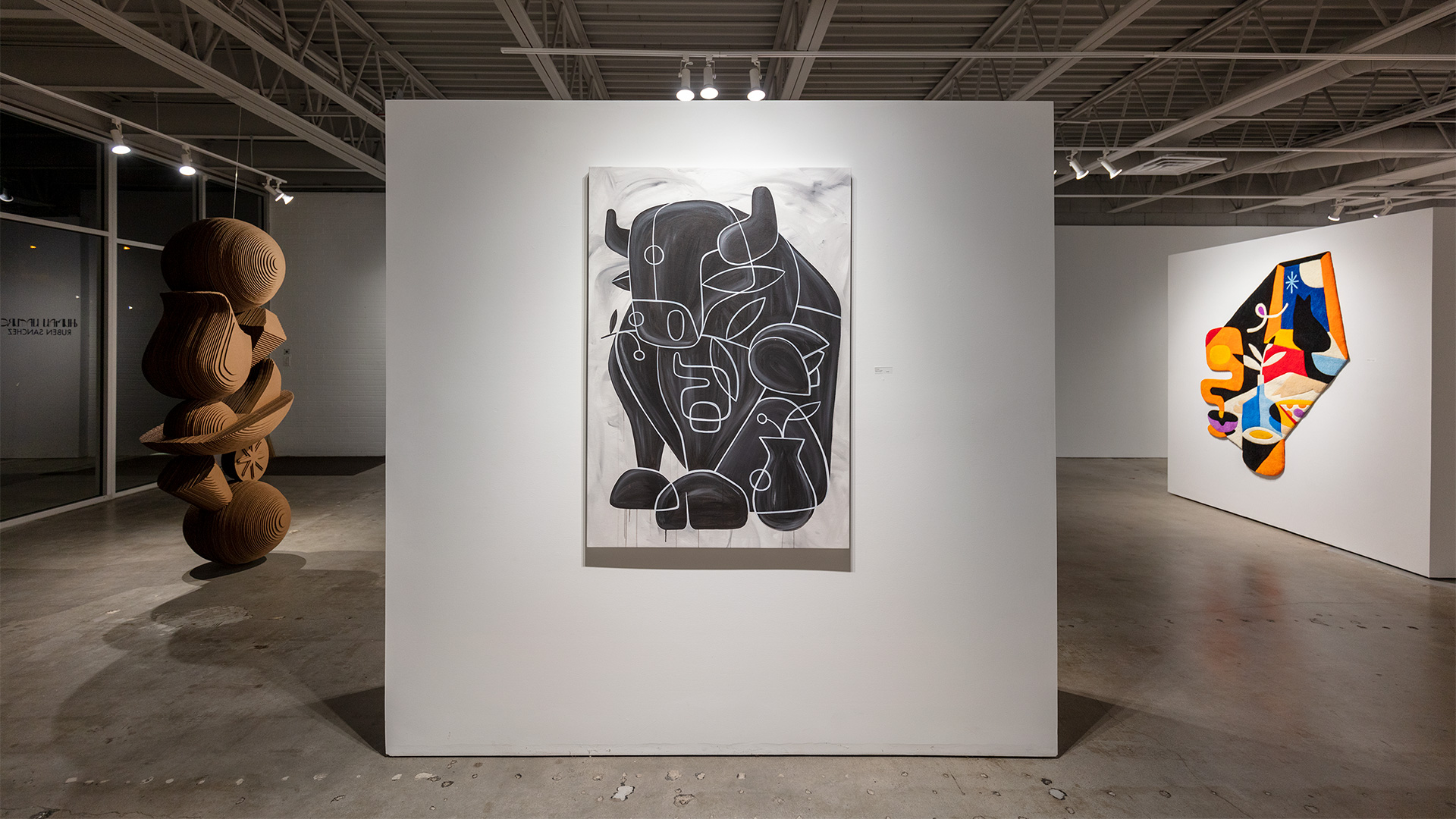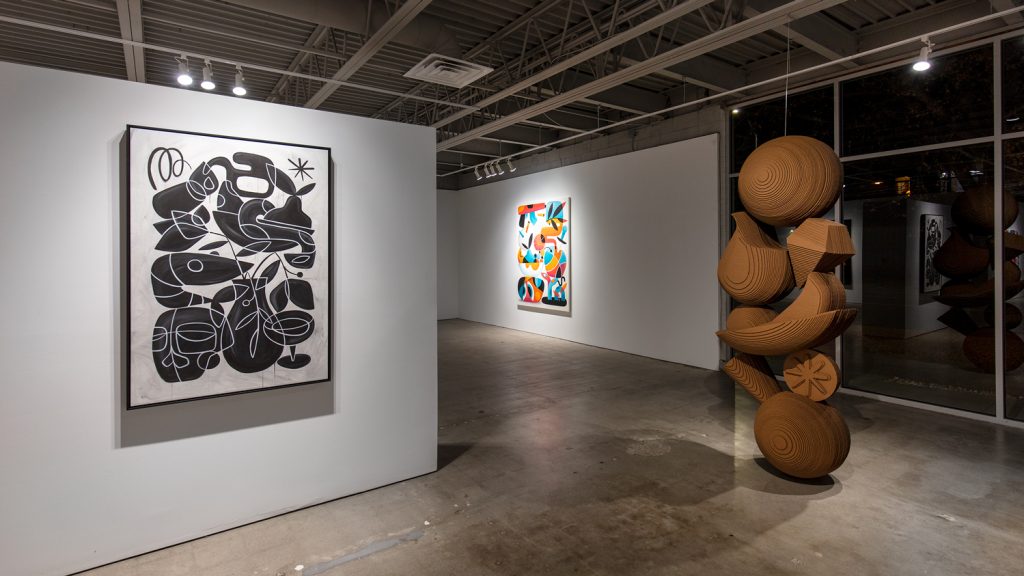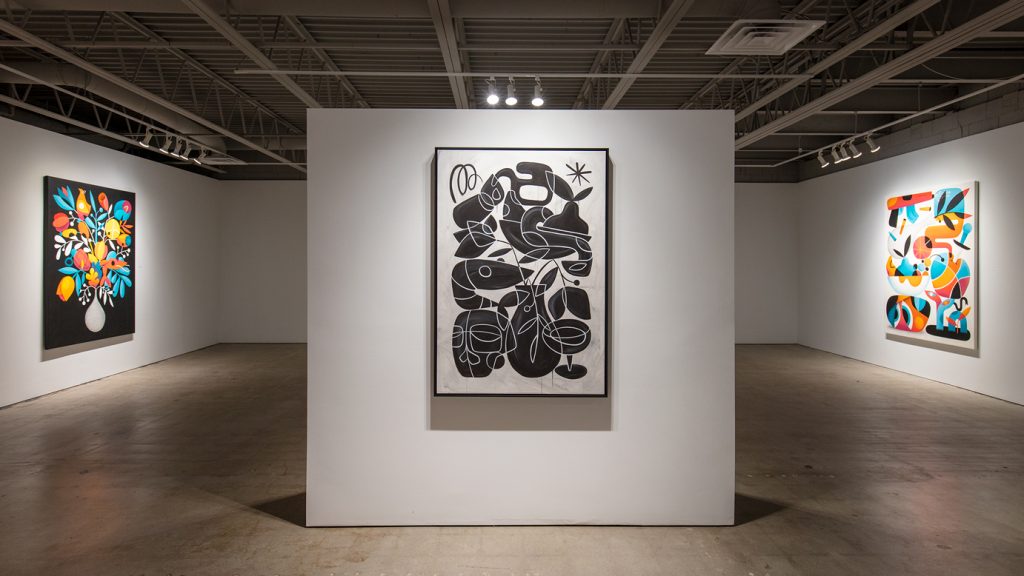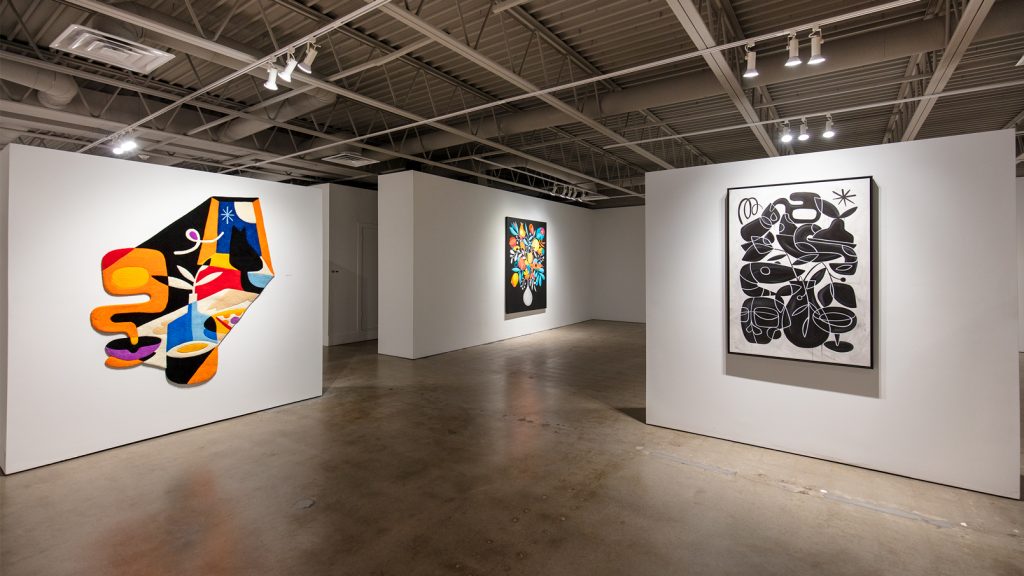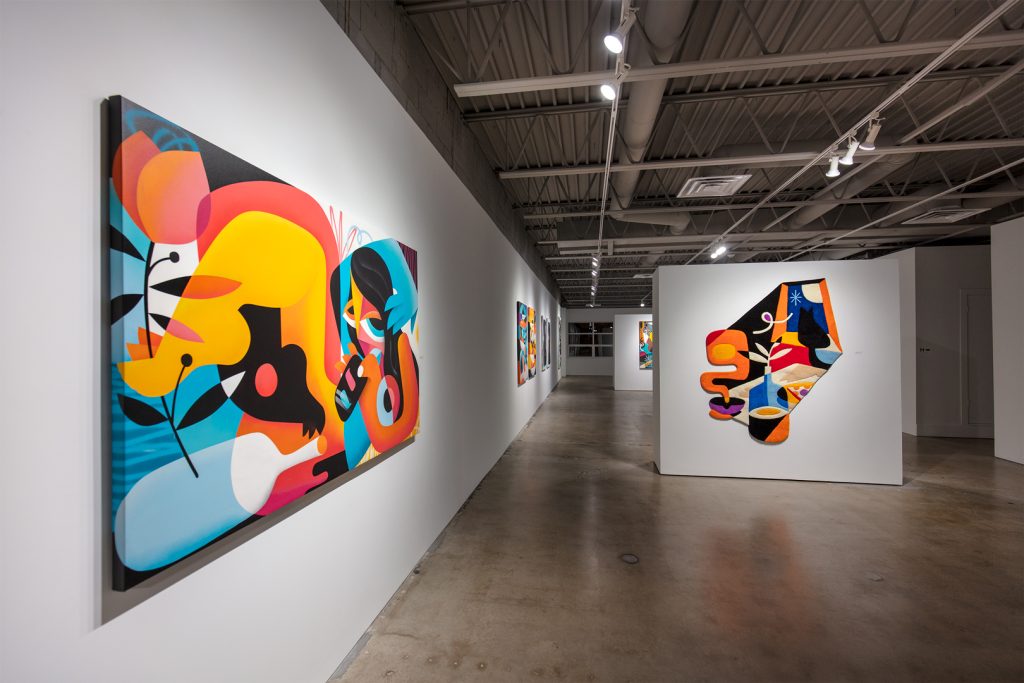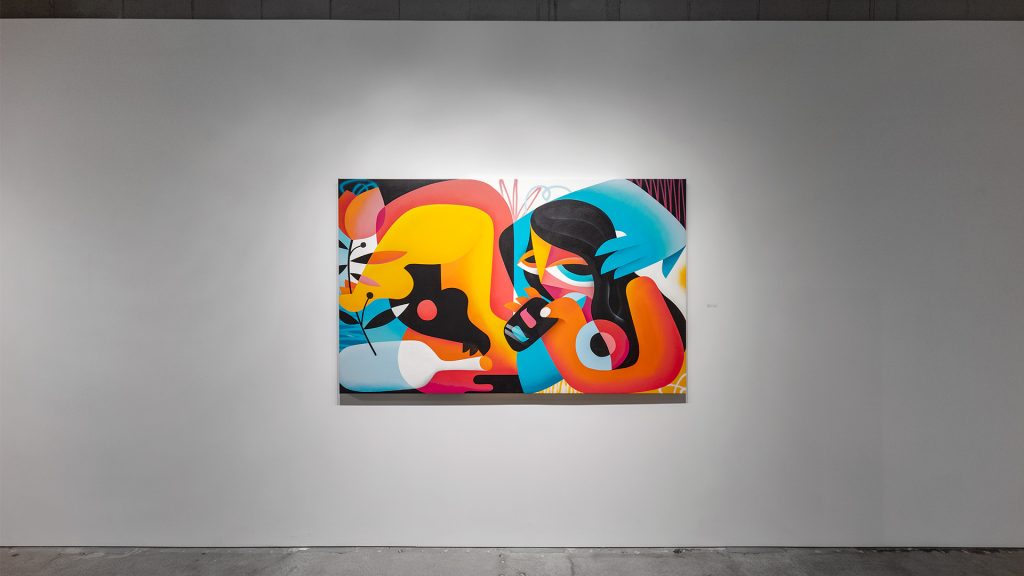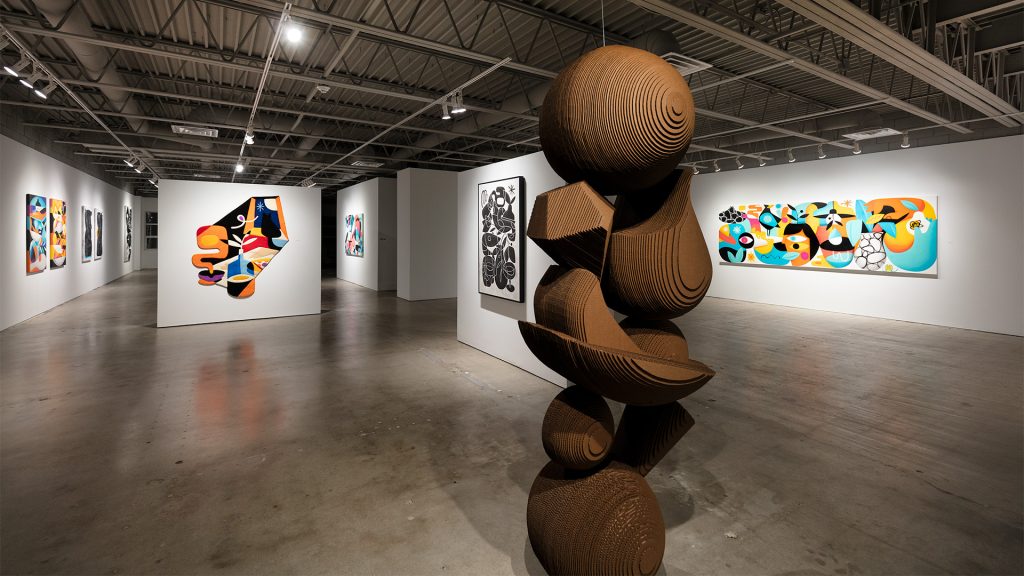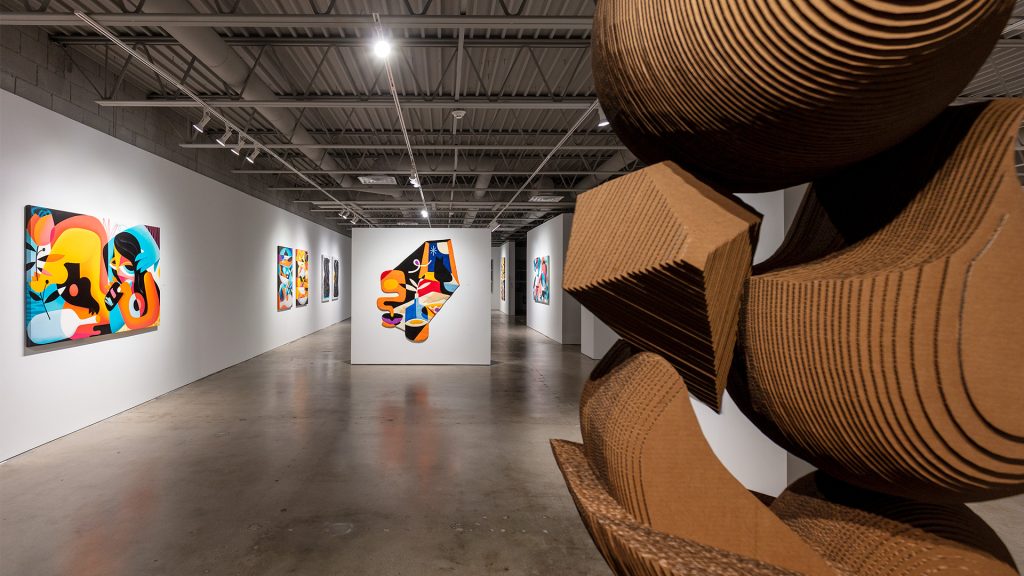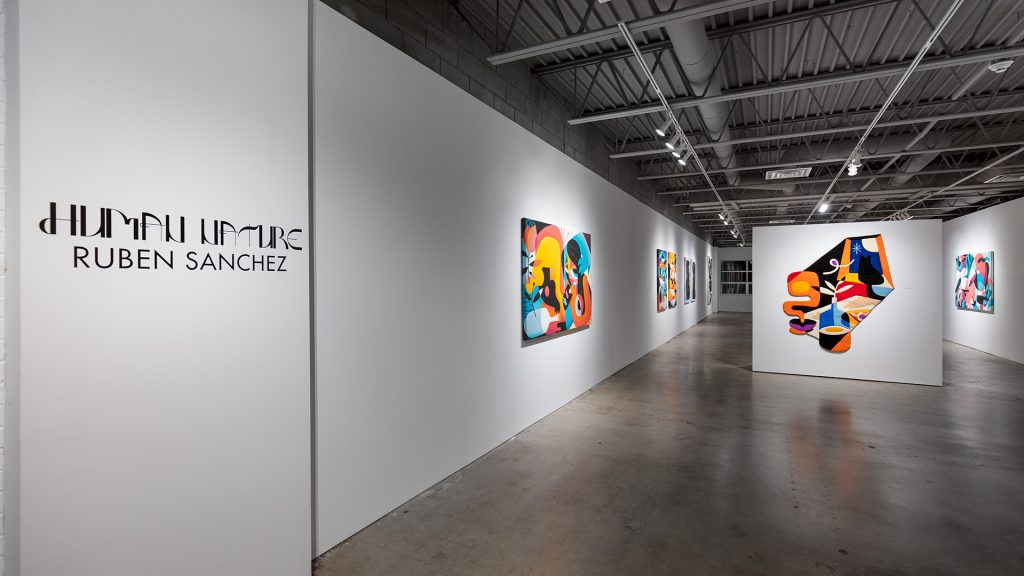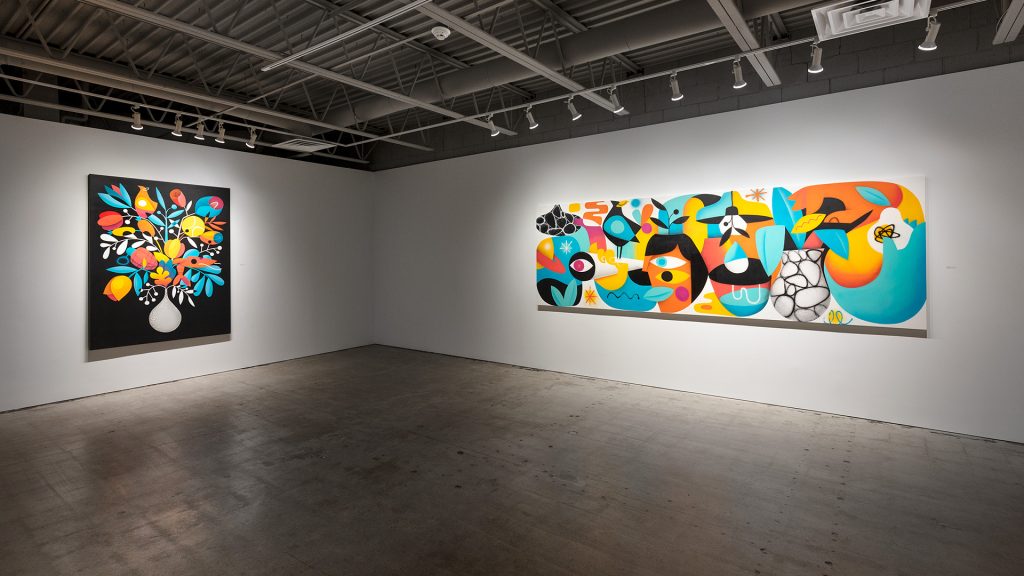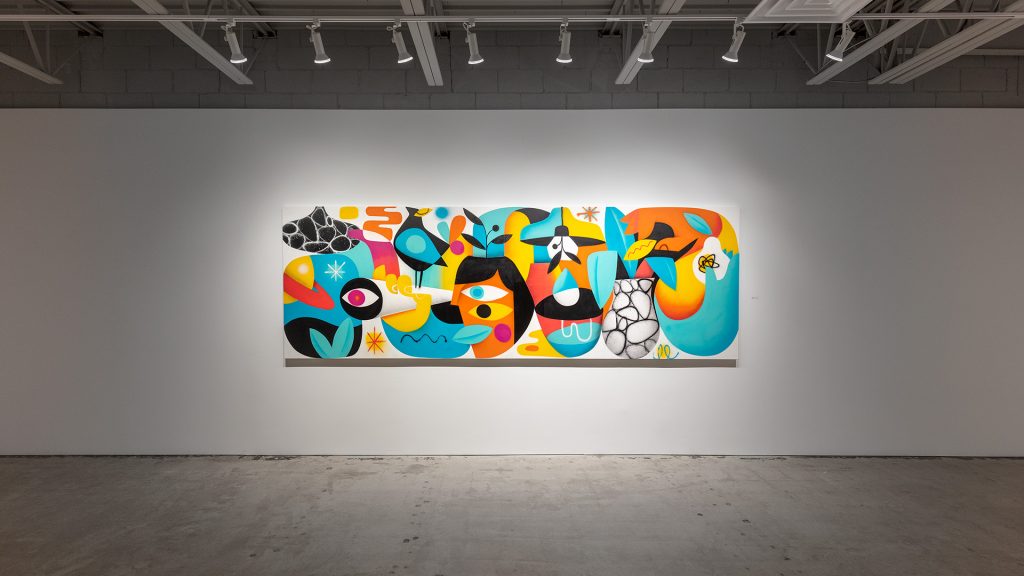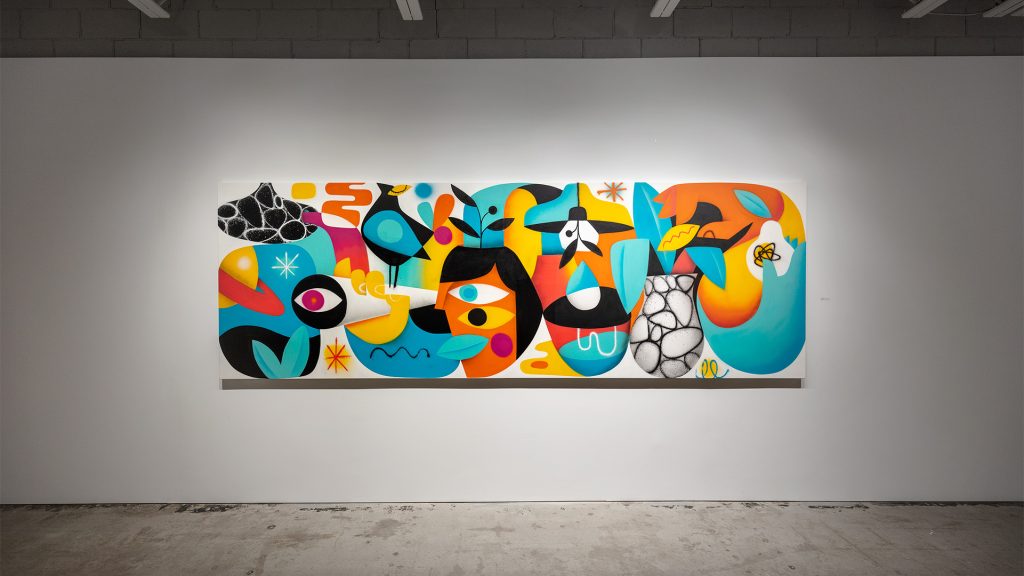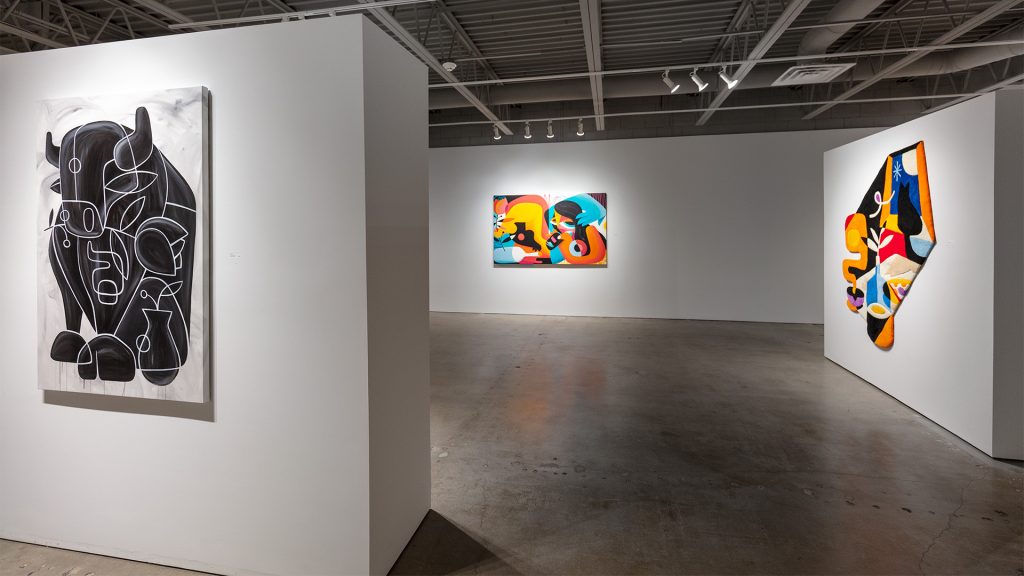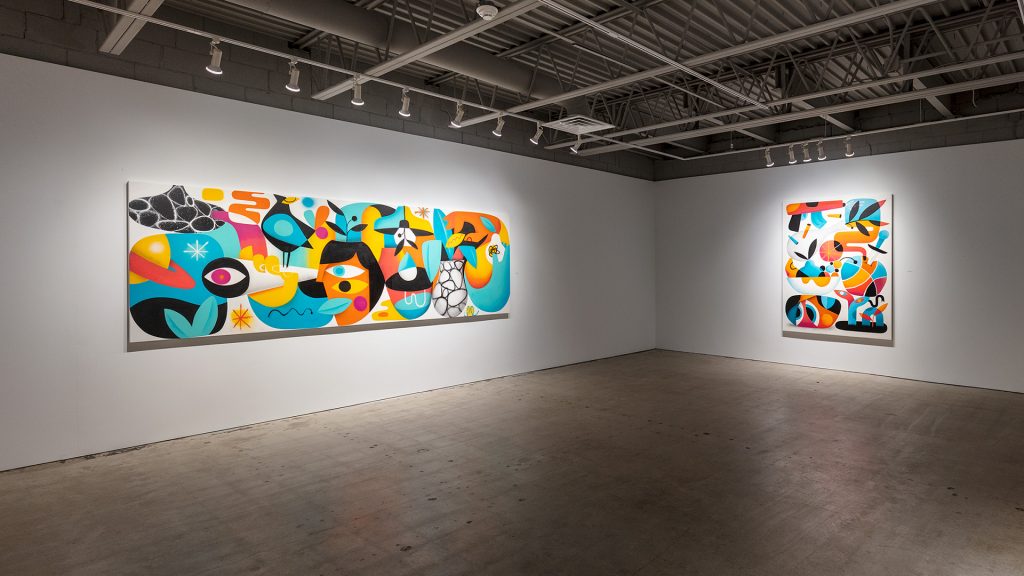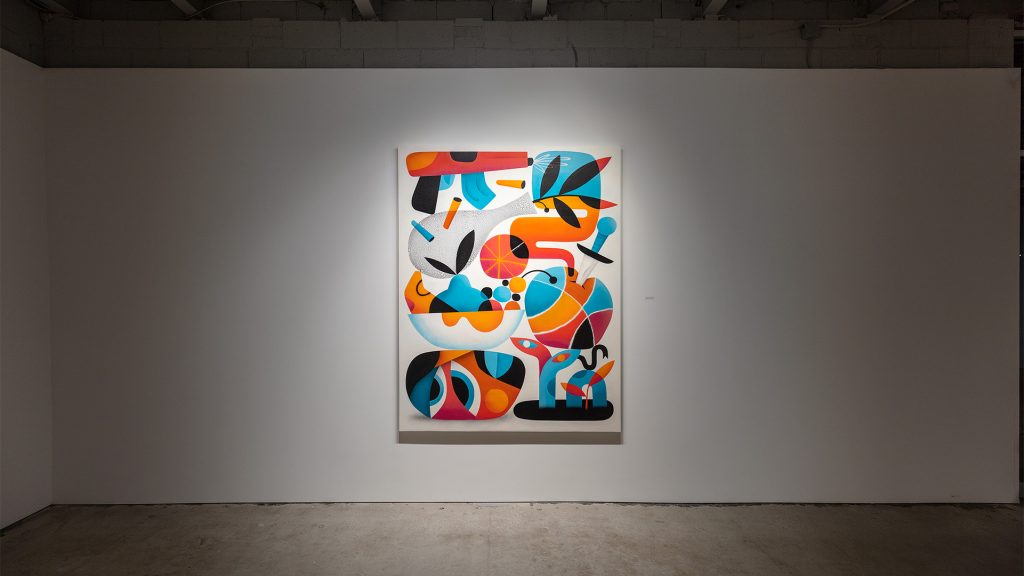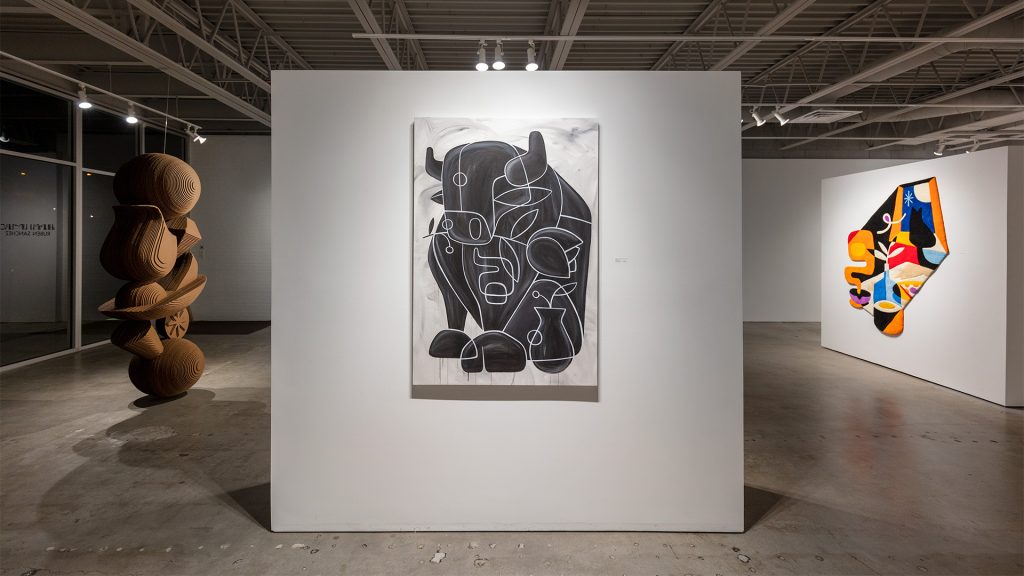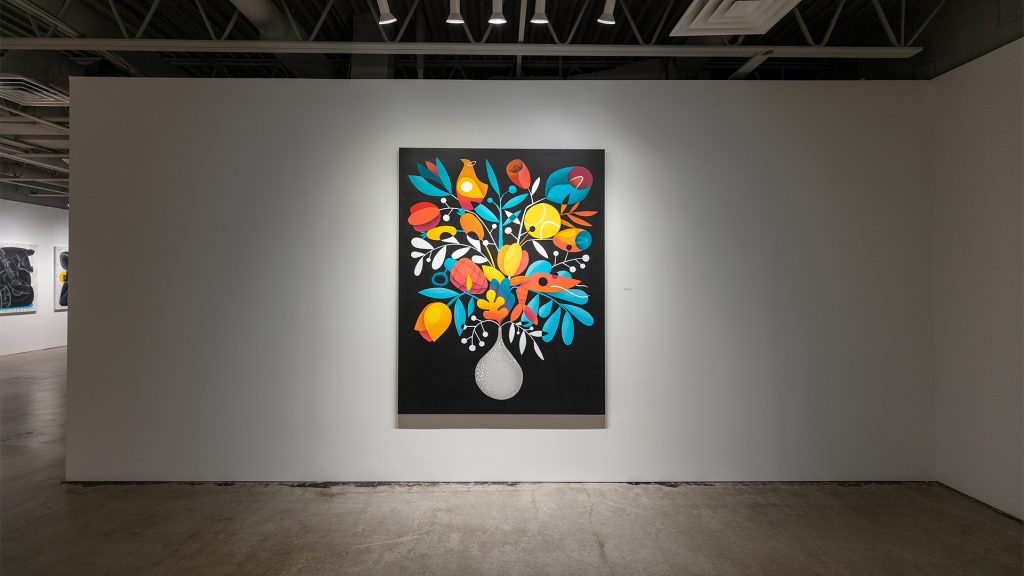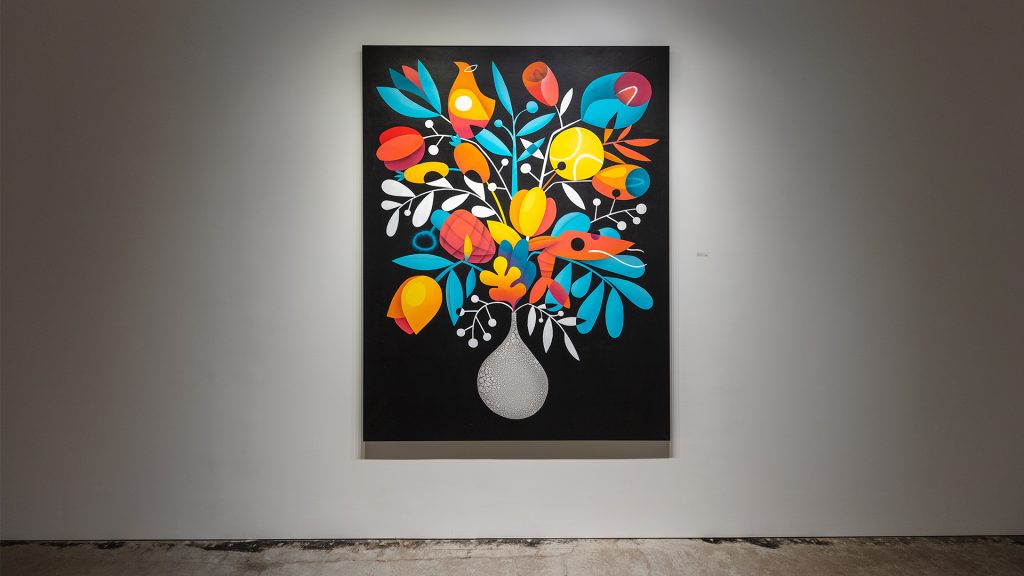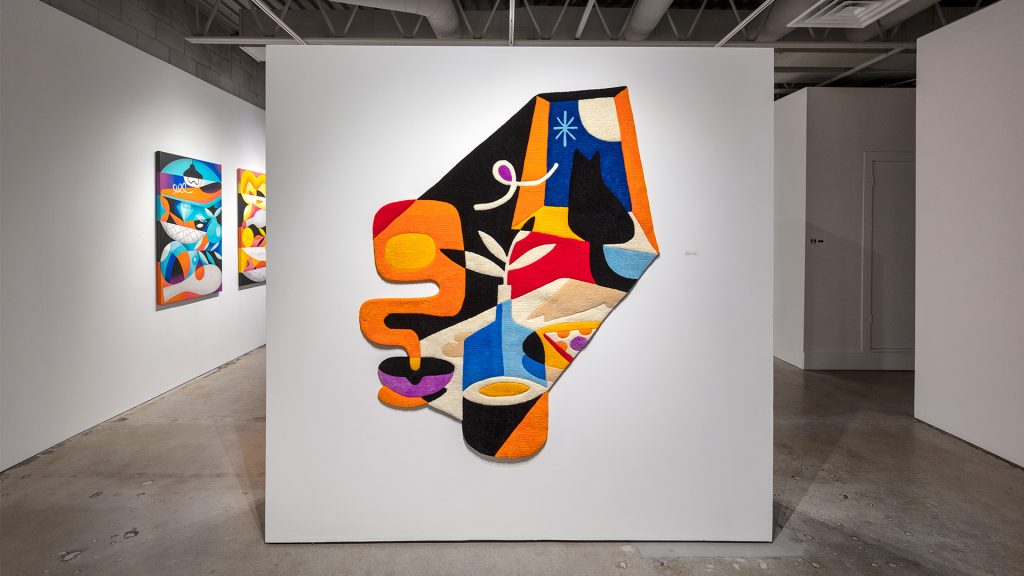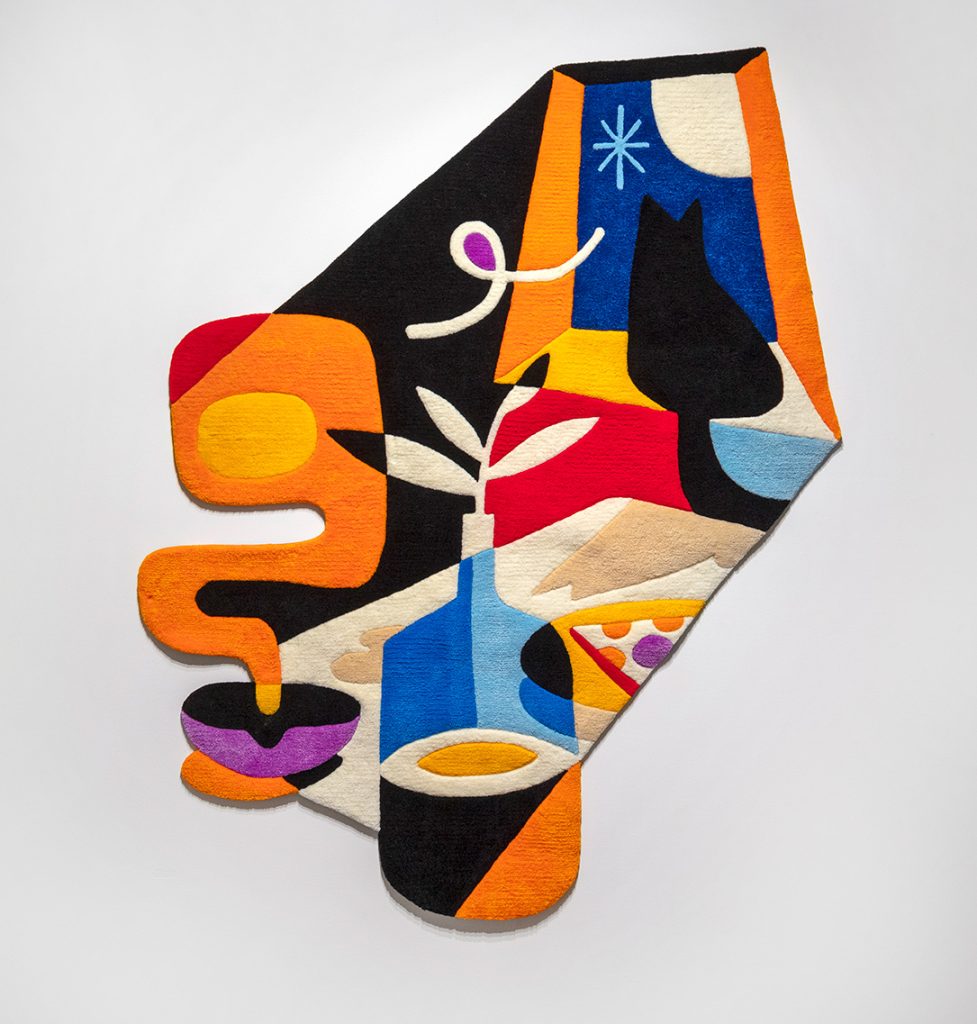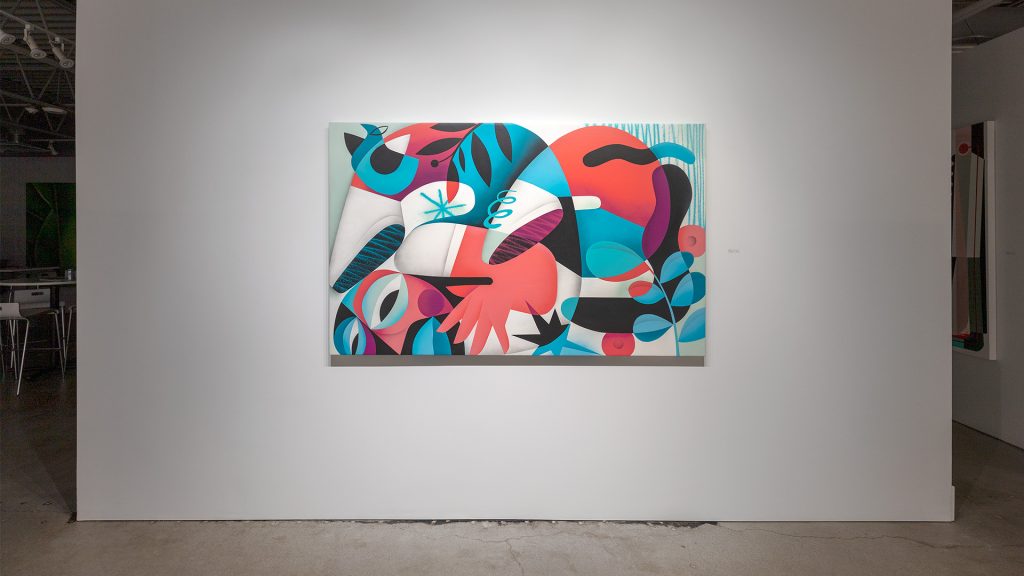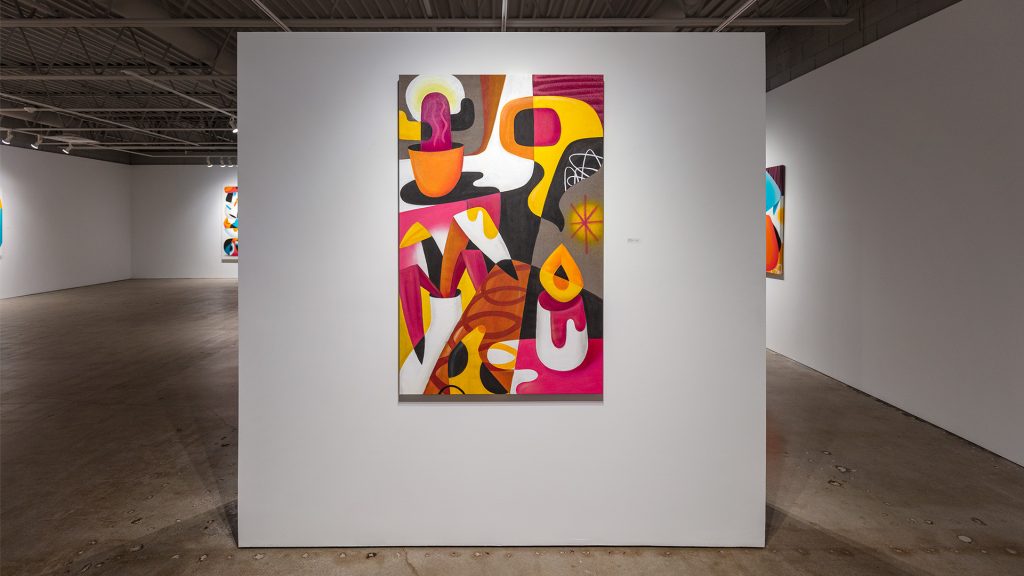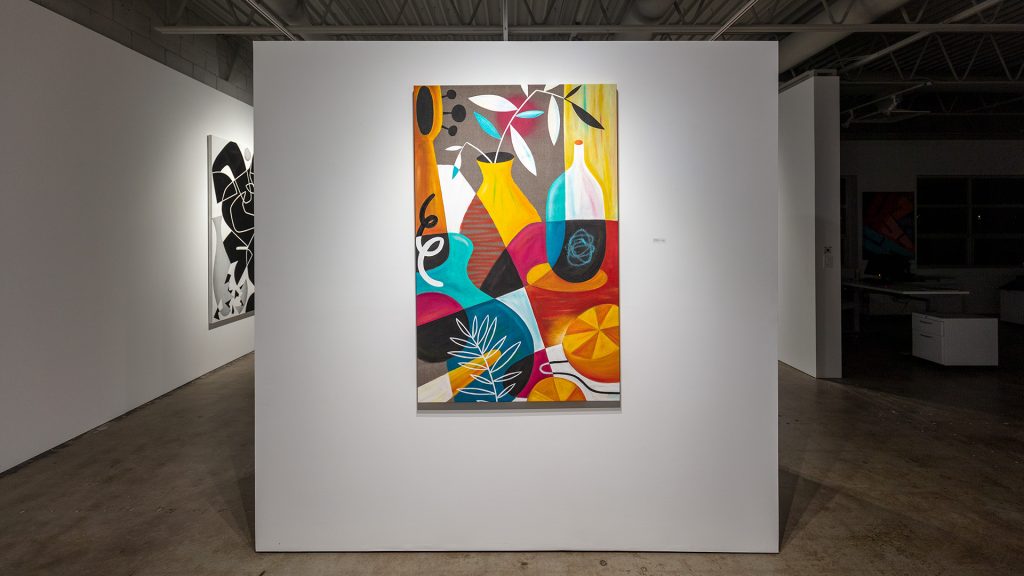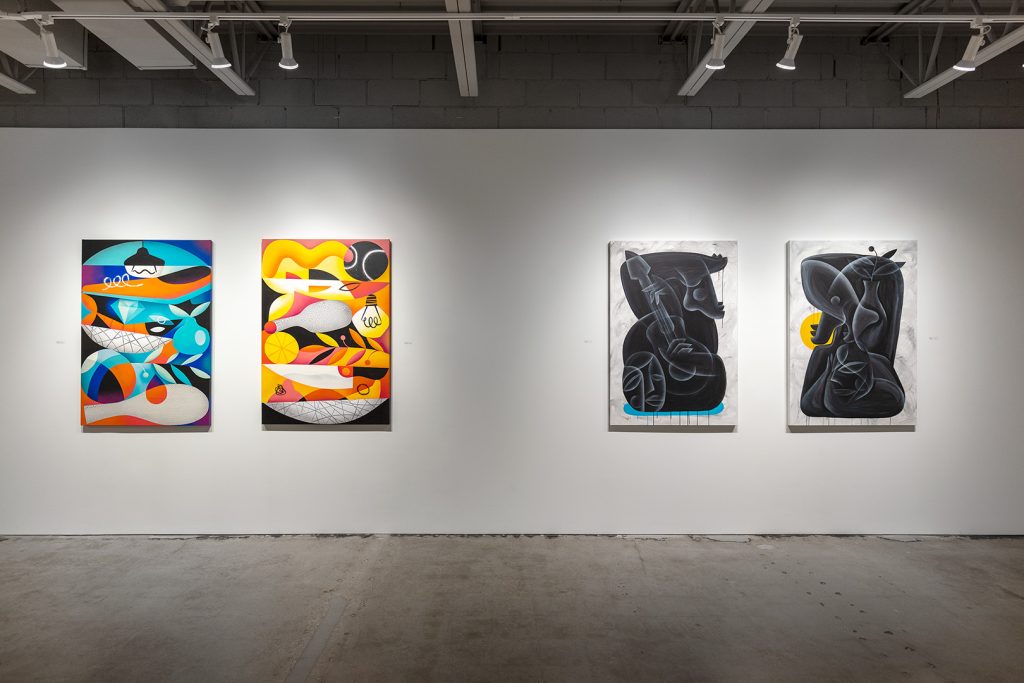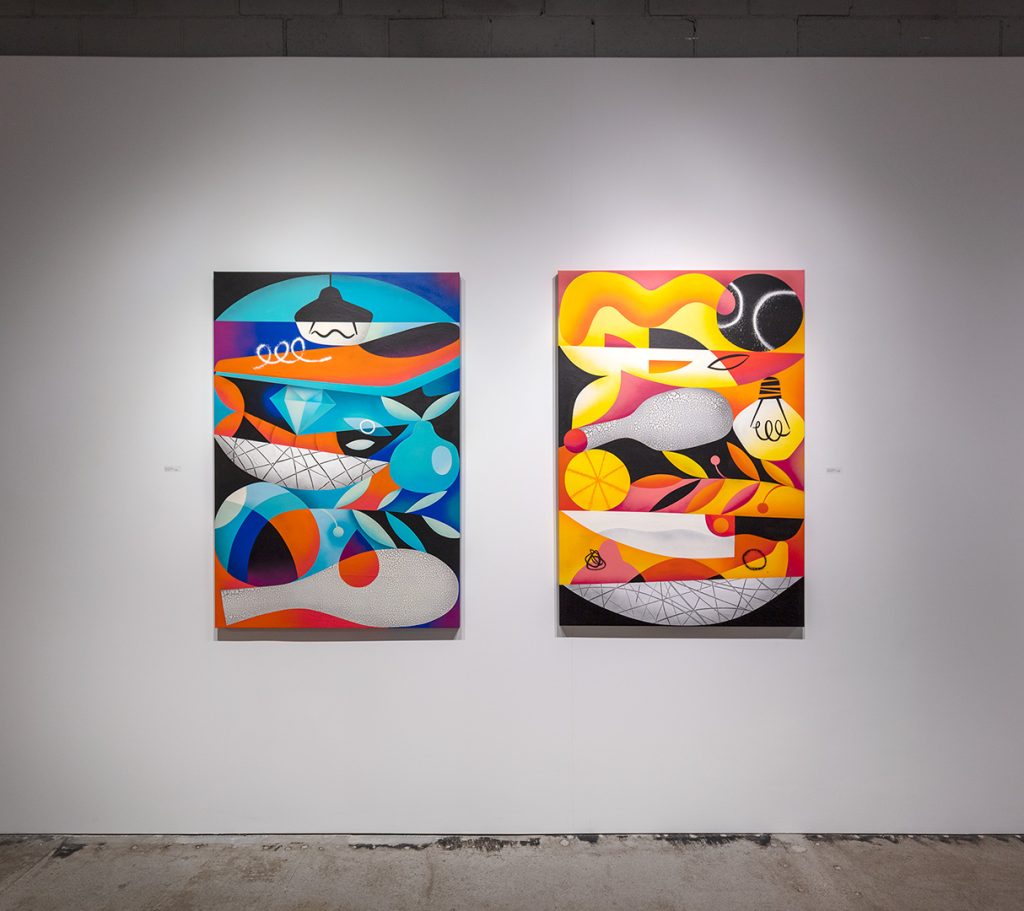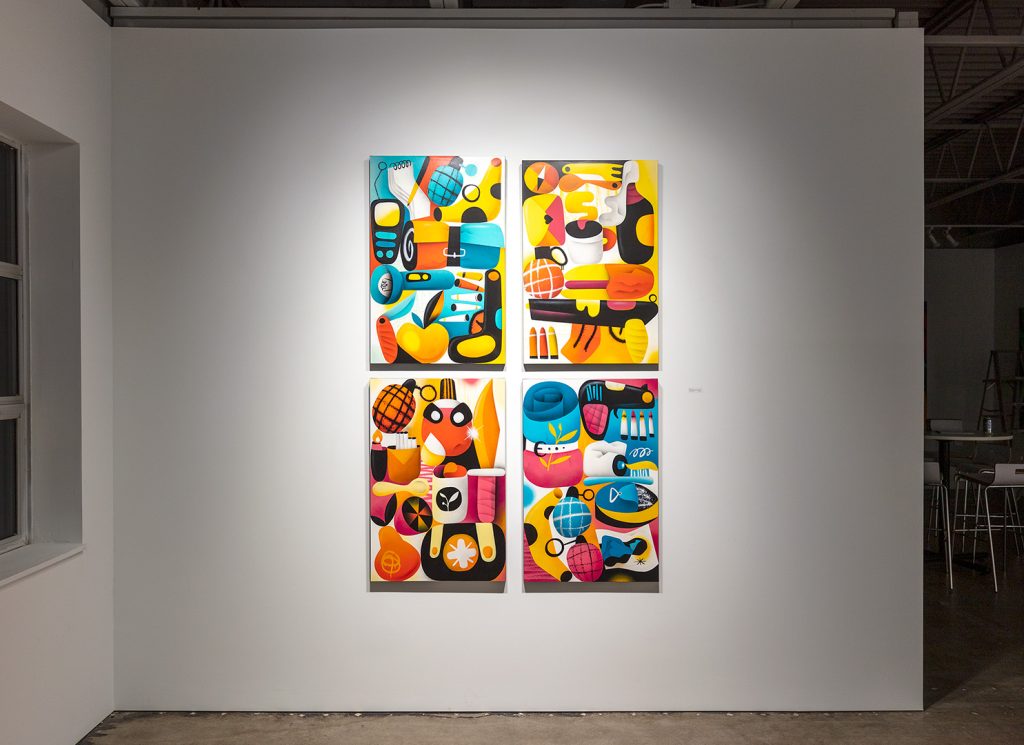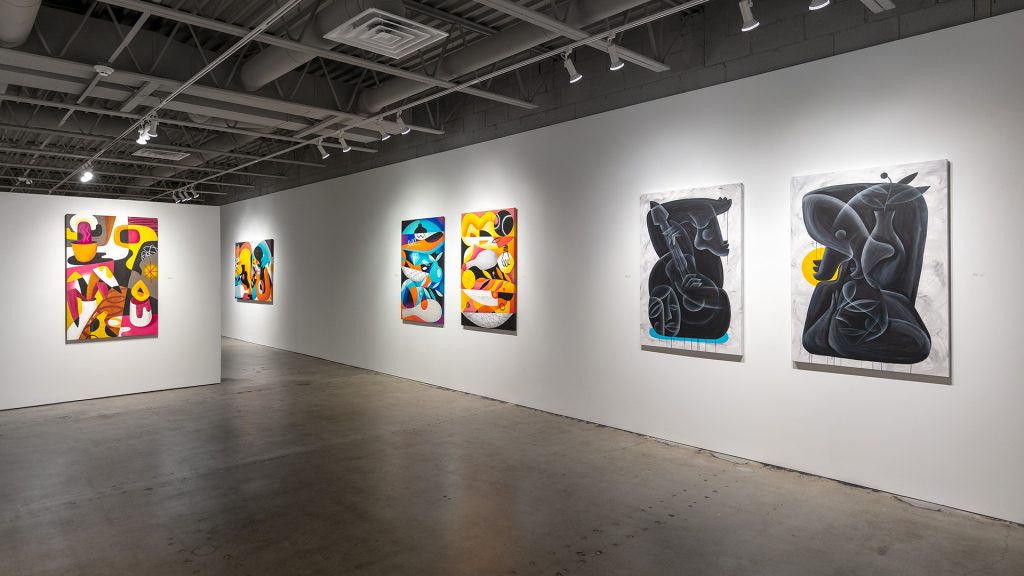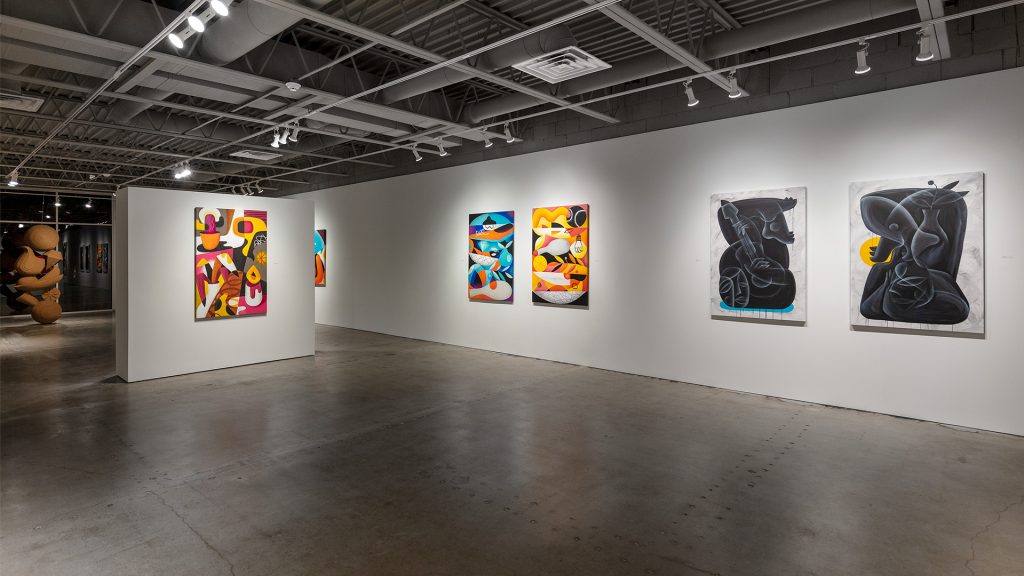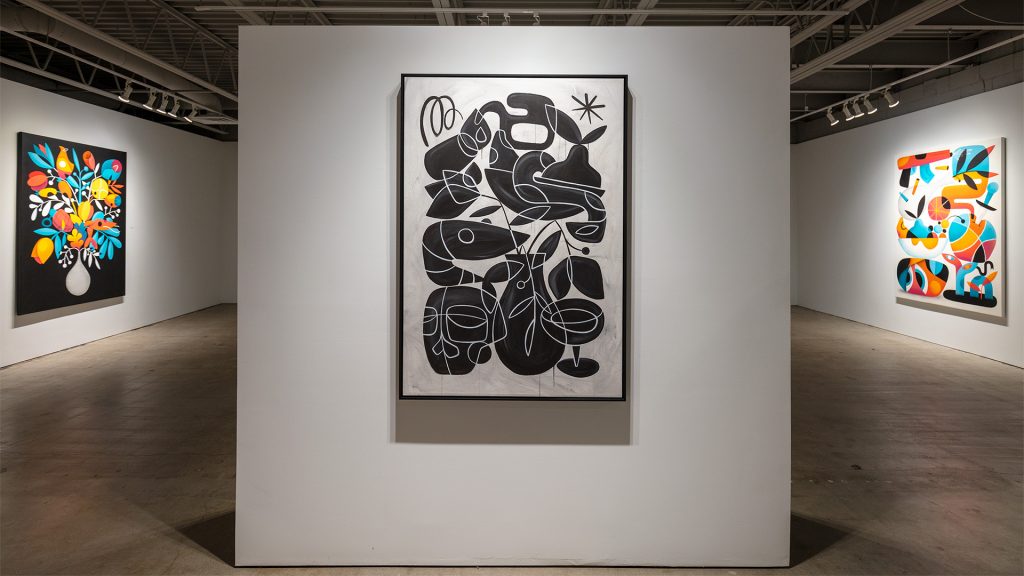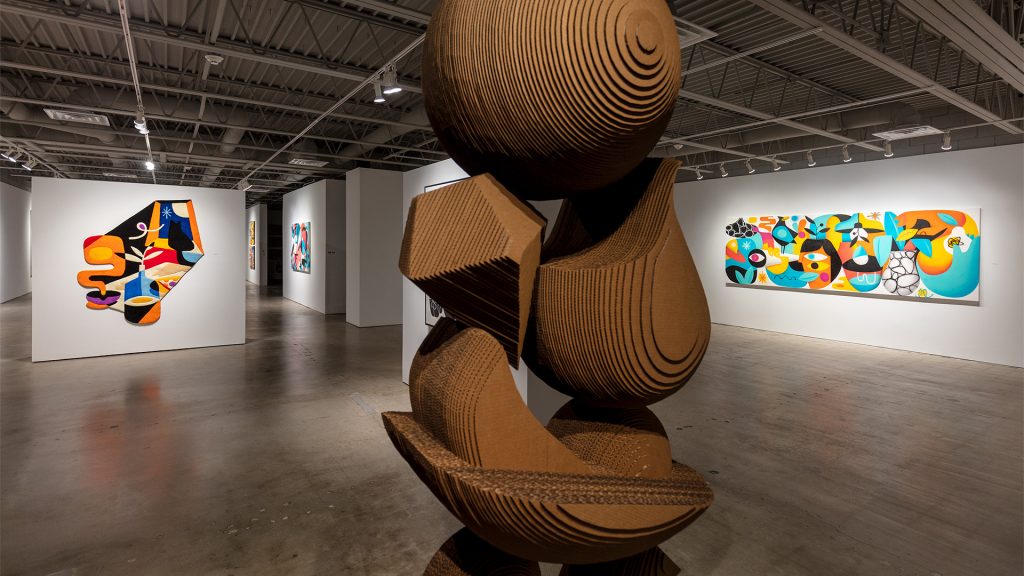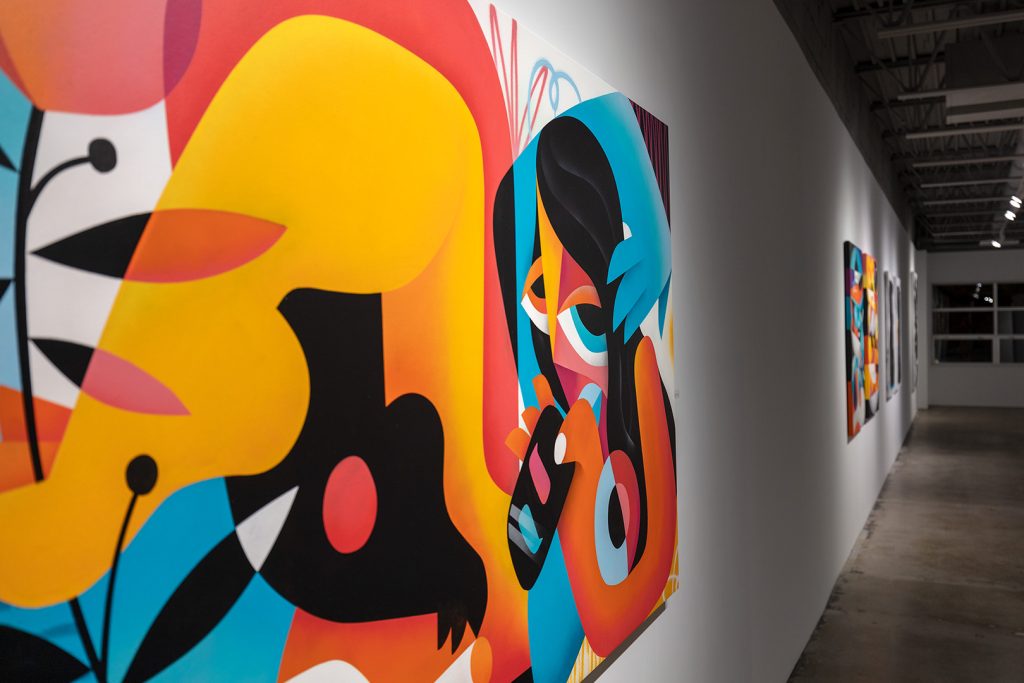TEXT BY MICHAELA MULLIN | VIEW IMAGES
It’s Just (…) But It’s Not
Place is important to artist Ruben Sanchez. Because environment + person = the human condition. He is interested in how the world understands us, and we, it. With signature emblematic icons found throughout his work, the materiality of anxiety and overcoming intrigues him, leading to exuberant paintings, sculptures, murals, and more. Sanchez notes that his artworks “sometimes act as mirrors, creating a colorful therapy, and filling the gallery with questions that ask us to think about the mysteries of our mind, the most powerful tool we have.”
His “post-cubism flirts with abstraction,” and with black, white, and the boldest of colors, reminiscent of his home country, Spain, his work merges person and place into a musicality that catches every eye. There’s a story being told in each work. But more importantly, there is a story being told between, among, and through this entire solo exhibit, Human Nature.
“91.4 Percent (Of Your Fears Will Not Come True)” is a large-scale narrative-cum-dreamscape that messages so many things about what we anticipate going wrong: someone letting the air out, emotional deflation, gun and shell casings, the spill over—the overall upset. These fears are balanced atop the human head or heads, and snakes. Everything is a fine balance between choices and chance—not, though, so simple as good and bad—and for better or worse, originating from a certain garden we are all familiar with as metaphor.
“Layers of Normality II & III” capture and evoke action and reaction, in a Jenga-like towering. The strata of items, such as vases, bowls, fruit, basketballs, lightbulbs (a reference to Picasso’s Guernica, where the sun/light/bulb resides over the town’s bomb devastation) fulfill a frontal linear perspective of what happens ‘on the ground,’ so to speak, regardless of aerial or atmospheric releases.
One of the four jovian planets, with its rings, can be seen in “Utopian Dream,” at the very left of the composition. To the right of that, a telescope then points us back to the planetary window. Next comes the human head beyond the scope, and its eyes—the eyes move through the tube, so the mirror is referenced. The hanging light fixture behind the head illuminates the furniture and objects that place the scene—is it an interior? There is a vase with “empty” stones inside, a bird, leaves, and a final right-arm embrace at the right edge of the canvas, bringing the entire composition back to the left. This infinite-loop-reading of inside and outside perfectly frames and reframes what, for Sanchez, is no clear delineation between interior and exterior—there are enough social, cultural, and economic walls, no need for concrete ones here.
The delightful and poignant work, “No Answer,” is an abstract painting with a figure in repose, lounging while talking into their mobile—leaving a message, one would presume. The figure here, like many of Sanchez’s bodies, often appear as if they are “vogueing,” whether they are horizontal, riding bicycles, or seemingly disembodied arms dancing on their own.
Sanchez’s two sculptures, “Ungravity” and “Equilibrio,” represent two states of balance. The infinitive, to balance, becomes something we humans are tasked with in different ways throughout our lives. These works, large and small respectively, both stand upright, but the means of their standing are at opposite poles. The stellar “Ungravity,” made of corrugated cardboard, is an extreme additive sculpture—growing tall with each new flat piece of cut-out cardboard and suspended by wire, though it sits on the floor. The corrugation offers texture and operate as added shadows within the sculpture. “Equilibrio” is a ceramic still life that, again, is stacked to a vertical composition, though shorter in stature and solid at its base.
“Insomnia” is a wild rug of hand-tufted acrylic wool. This non-rectangular piece creates another in/side/out/side scene. A black cat sits at the window, looking out—to the moonlit sky, an asterisk gleaming up above. Are the other shapes “behind” the cat remnants of a party, a solo resident? You see a steaming bowl of soup? A slice of pizza? A central vase of leaves without blooms, often the case with Sanchez’s flora—because flowering is not always necessary, right?
This show holds so much and so many “dynamic still-life paintings with elements in fragile balance or being scrambled by external elements that disrupt daily life,” in Sanchez’s own words. He knows the eyes have it, for “seeing” is key. A branch of things here, a layer of something there, a rug that can be pulled from beneath us. May we not infinitely keep, but continually re-encounter, our balance.
Make sure to visit the gallery to see Human Nature before it closes, Dec. 3.
Exhibit Images

